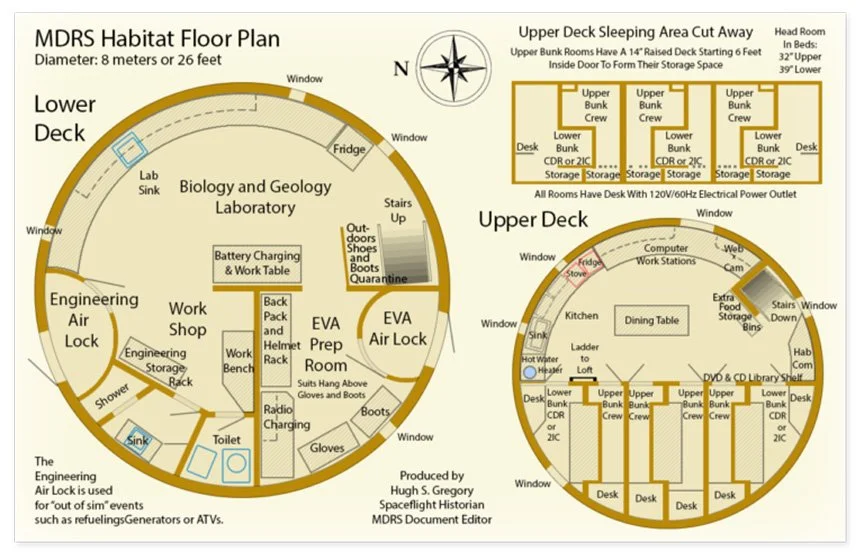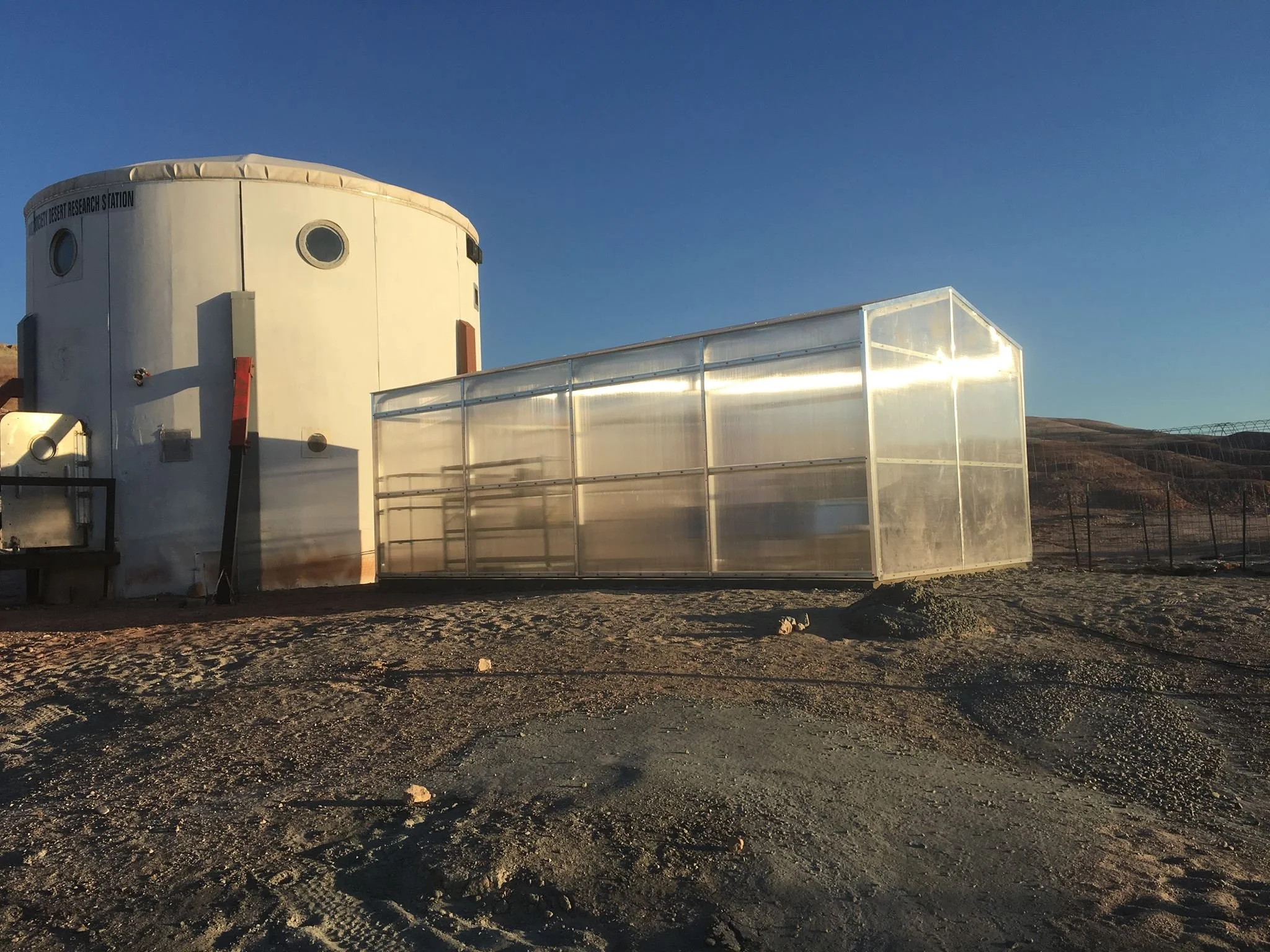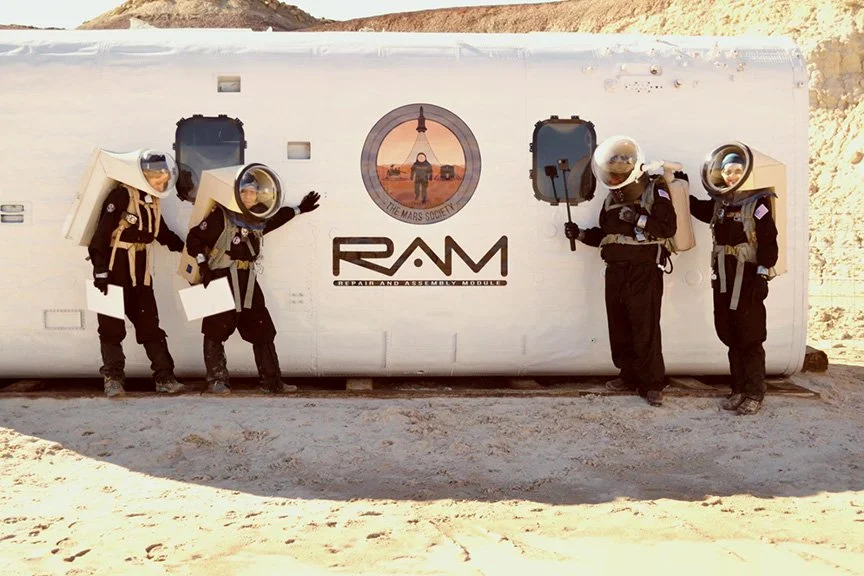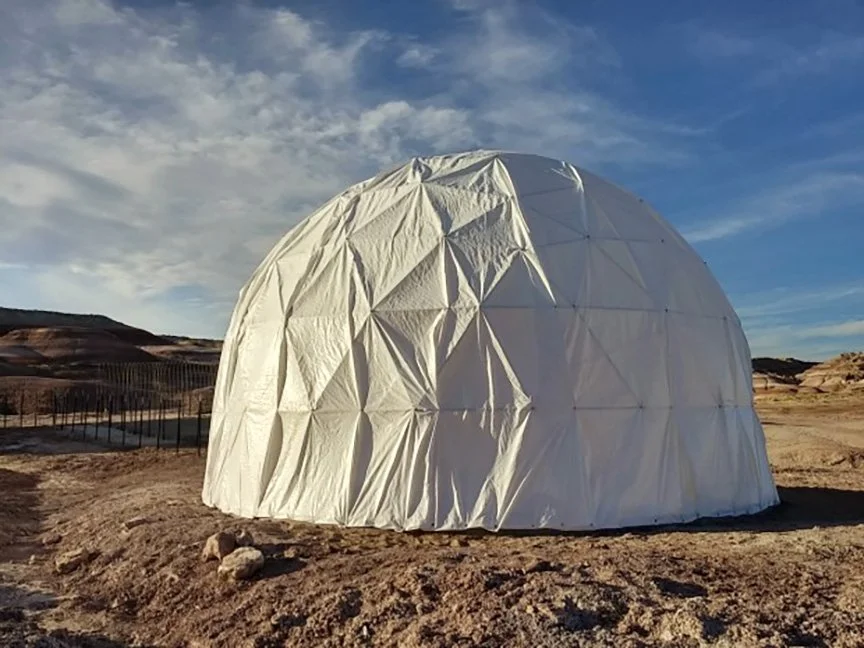
The Mars Desert Research Station
In the Utah desert, the Mars Desert Research Station or MDRS, is managed by the Mars Society. In this remote place (at 2.5 hours from the nearest hospital), different teams from different countries are enabled to participate in missions of various duration sharing the same idea: preparing human exploration of Mars. MDRS missions started in 2001. Nineteen years later, over 1,000 people have participated as crew and some are now involved in other analog programs around the world.
The simulation offered at MDRS is in many ways similar to a possible crewed mission exploring Mars: desert environment, isolated habitat with
limited living spaces and resources, spacesuit simulators for EVA and local productions of energy and food.
To face these constraints, the MDRS station is made of different infrastructures. All of them, expect the Robotic Observatory are linked with the Hab via tunnels allowing crews to remain in simulation whatever their activities.
All photos on this page credit: James Burk / The Mars Society
THE HAB
The Hab is the hub, the central node of the station. In details, the Hab is a two-floor cylinder of 8m radius consisting in the main living space of the crew. The Upper Deck is made of the crew’s rooms, the kitchen and dining room. On the Lower Deck, the hygiene part of the station, restroom and bathroom, the storage rooms for Extravehicular Activity (EVA) suits, the different laboratories for Engineering, Geology and Biology and the airlocks to get in and out the station are displayed.
THE GREENHAB
The GreenHab is the greenest part of the MDRS station, lost in the middle of the Utah desert. It is the station’s greenhouse housing growing fresh vegetables supported by an aquaponic growing system and science experiments. It is also equipped with heater, cooler and additional lights to be functional all the year. Indeed, food production is a challenge of the exploration of planet Mars!
THE RAM
The RAM (Repair and Assembly Module) is the newest building of the station used for repairs and engineering research. It can even host an ATV/rover for maintenance!
THE SCIENCE DOME
The Science Dome is a 7-meter geodesic dome housing a microbiological and geological laboratory.
THE ROBOTIC + MUSK OBSERVATORIES
The Robotic Observatory is equipped with a Celestron Schmidt-Cassegrain telescope and is used for astronomical imaging. Its dome can be controlled on site or from the habitat module. The Musk Observatory is used as a solar observatory.
TECHNICAL + OPERATIONAL DETAILS
The station is powered by a 15 kW solar system feeding a 12 kW battery bank. That is the main source of power. In winter, a 12 kW generator can be used as a back-up when crews are using more power than the solar system can provide.
The crew is also supplied with food similar to those used on space missions. For EVA, five All Terrain Vehicles and four all electric two person Polaris Rangers are provided.
A Mission Support Center supports the crew thanks to volunteer teams. It gives advice and operations to the crew to perform the science part but also the maintenance of the station.





